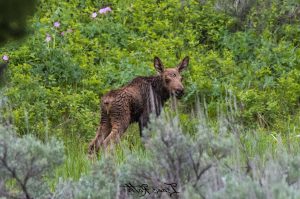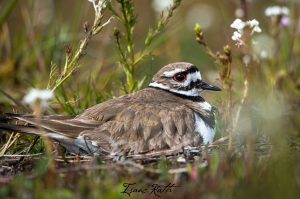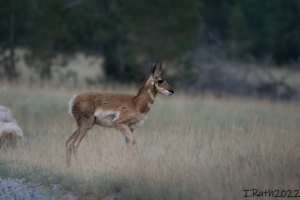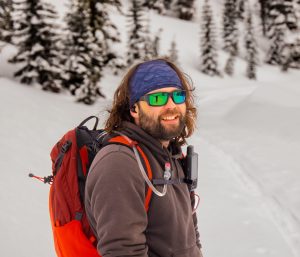Photographing Baby Wildlife: Guide Tips for Safety and Respect

“Any glimpse into the life of an animal quickens our own and makes it so much the larger and better in every way,” John Muir. As a naturalist guide in Yellowstone, one of the lessons I try to impart upon my guests is the best way to view baby wildlife in Yellowstone ethically and responsibly and in a way that doesn’t negatively affect the very animals guests travel to Yellowstone to witness.
Baby animals are very cute but you should not approach them. When one finds a baby, or babies, the mother is often nearby and watching their young, making sure they are safe. If guests disturb the animals it’s possible the mother might abandon her young. Also, some mothers (moose, elk, and bears for example) will ferociously defend their offspring and potentially injure humans who venture too close.

This moose calf ran across our path while we were out on tour and we didn’t see the mother right away. It took us 10 minutes to find her. (From a safe distance!)

This killdeer protects her eggs by pretending to be injured and leading the predator away. Then, when the eggs hatch, she immediately moves the young because predators are attracted to the smell of the remains of the egg shell.

This pronghorn fawn looks like it’s on its own. In reality, its mom is just lying in the grass not being seen. The pronghorn have little to be afraid of because they are the fastest land animals in North America and fawns can run quickly within one week of birth.

These baby sandhill cranes are also known as colts. They grow fast and forage with their parents shortly after hatching. They need to be ready to migrate with the adults by autumn.
Consider joining a tour with Yellowstone Wild and we will help you to view these baby animals from a respectful distance through binoculars or a spotting scope. It’s our pleasure as guides to help you see wildlife and learn the best ways you can help animals thrive on the Yellowstone landscape and elsewhere. Take a photo tour and we can help you capture some amazing images to take home.
Photos and content courtesy of Yellowstone Wild Guide Isaac Rath / IssacRath.com.

To learn more about Isaac and the rest of the Yellowstone Wild team visit our “About Us” webpage.
